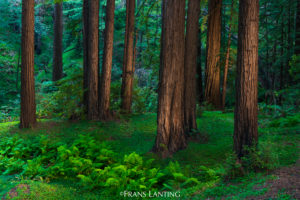Nearly every spring and fall for a decade, scientists have detected algal blooms of the diatom Pseudo-nitzschia in Monterey Bay. Several species of Pseudo-nitzschia produce the neurotoxin more familiarly known as domoic acid, which can be fatal to wildlife and people. Normally a spring bloom lasts from four to six weeks, but this year’s bloom didn’t peak until late July. In mid-August, scientists were still detecting domoic acid at the Santa Cruz Wharf, though the intensity had waned, says UC Santa Cruz ocean scientist Raphael Kudela.
The complexities of algal blooms have challenged scientists all over the world. After a decade of monitoring algal toxins from the Santa Cruz Wharf, Kudela and other UCSC researchers are making strides in understanding, and even predicting, the blooms. Kudela recently won a $792,000 grant from California Sea Grant and the Ocean Protection Council to develop and coordinate a program that would help predict and announce harmful algal blooms in California.
That’s good news for wildlife rescuers. Every year, the Marine Mammal Center in Sausalito cares for sea lions with chronic and acute cases of domoic acid poisoning. This year they had 28 sea lion patients between January and June. “A forecasting program would be really useful for wildlife veterinarians,” says Frances Gulland, director of veterinary sciences at the Marine Mammal Center. “It would help us prepare for increased numbers of sick animals on the beaches and ensure we have the resources to care for them.” Jay Holcomb, executive director of the International Bird Rescue Research Center, also welcomes the news of an advance warning system, which would allow his organization to prepare for the inevitable influx of toxin-affected birds during blooms.
California is not alone in its quest to understand and mitigate harmful algal blooms, which are increasing in frequency and severity from Alaska to Baja and around the world.

.jpg)



